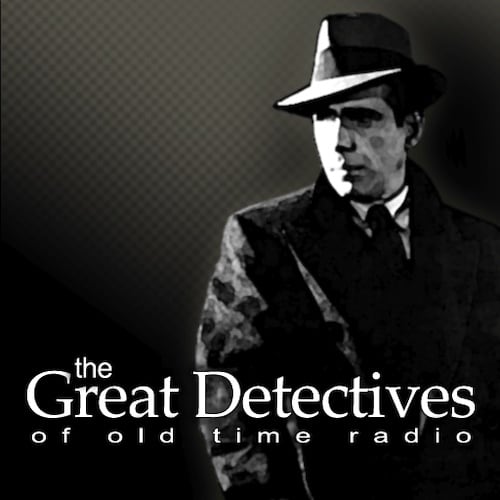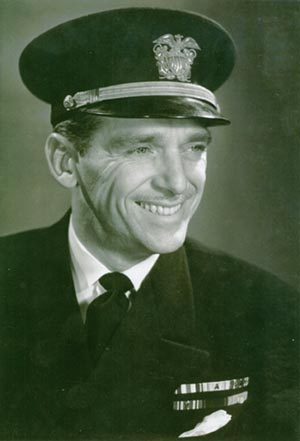Continued from part six.
CBS Radio Mystery Theater
The third time proved to be the charm for network radio revivals. Himan Brown, who’d created the Inner Sanctum Mysteries during the Golden Age of Radio was director and producer of the program. The show was hosted by E.G. Marshall who in true Inner Sanctum fashion was the spooky host of the proceedings. The Mystery Theater told a lot of different sorts of stories under that rubric of mystery. The series was perhaps best known for its chilling stories in line with Brown’s reputation from Inner Sanctum. These hit a sweet spot in the 1970s as stories of the supernatural were popular at the box office. However, the CBS Radio Mystery Theater went beyond that. They adapted several detective stories featuring Sherlock Holmes. They also adapted several works of Mark Twain, along with Les Miserables, and The Last Days of Pompeii. The series was also known for its annual adaptation of The Christmas Carol starring E.G. Marshall as Scrooge.
The series had a lot of ties to the Golden Age of Radio and was meant to play to fans of the Golden Age of Radio. The very first episode starred Agnes Moorhead (who had starred in the most famous American radio play Sorry, Wrong Number) a few months before her death in April 1974. Among other Golden Age stars to appear were Brett Morrison of The Shadow, Superman announcer and the star of Philo Vance Jackson Beck, Yours Truly Johnny Dollar star Mandel Kramer as well as long-time radio favorites such as Mercedes McCambridge, Ralph Bell, and Larry Haines. Robert Dryden led all actors for most appearances on the CBS Radio Mystery Theater. At the same time, the CBS Radio Mystery Theater featured actors who’d become noteworthy and never appeared in the golden age of radio such as John Lithgow and Mandy Potemkin.
The series ran for 1,399 episodes over the course of nine seasons. Marshall remained the host until 1982 when Tammy Grimes took over. The series left the air after December 1982 but had a special place in the hearts of fans.
In 1997, CBS posted six episodes of the series on their website and the response was overwhelming. They received 250,000 emails. CBS-owned Westwood One agreed to resyndicate the series Monday-Friday in May of 1998 and ran it for six months with new intros by Himan Brown replacing the previous intros. However, they only attracted fifty stations and after six months the series was pulled. Brown blamed consolidation, where large media corporations, bought up huge numbers of radio stations and demanded maximum ad revenue, some wanting as much as 21 minutes of ads in an hour. Brown’s original programs only had space for ten minutes worth of ads and he refused to butcher them.
The series didn’t appear to be particularly well-marketed. Bob Stepno, who helped me find the above article, noted that there was no article announcing the series return, only its cancellation. I also found little fanfare for it in a newspapers.com search other than one newspaper columnist in Lincon, Nebraska who received letters from readers but he didn’t even know what station it was running on. Clearly, it seems Westwood could have done a better job promoting it.
Brown said he would resyndicate the series himself, but ended up settling for sharing them on NPR’s satellite service in 2000. Since then, the series has been shared frequently online on multiple websites. It remains the most beloved and sought-after American radio series that wasn’t part of the Golden Age of Radio.
A Prairie Home Companion
A Prairie Home Companion was begun by Minnesota Public Radio morning radio host Garrison Keilor in 1974. After doing some research, he decided he wanted to begin a variety show. The first program of A Prairie Home Companion featured twelve audience members. However, it grew, moving to larger venues.
The series was mostly music and storytelling, However, it included several recurring radio sketch segments. There was (of course), a golden age private detective parody “Guy Noir” as well “Lives of the Cowboys.”
The series went into national distribution in 1980. It wasn’t favored for distribution by NPR because of its expense and because NPR thought the series was an insult to small towns. However, the show persisted and eventually ended up syndicated outside of NPR through several different means. At the height of its popularity, it aired on 690 stations and boasted a listenership of 4 million. It remained on the air clear through the 2010s, with only a five-year hiatus. Keilor only retired from the show in 2016 and handed over hosting duties to Chris Thile. The next year, after a scandal involving Keilor and alleged undisclosed “inappropriate behavior,” Minnesota Public Radio severed ties with Keilor. The series was renamed Live From Here, which was canceled during the COVID-19 pandemic.
Post-Keilor, the series continued to offer music and storytelling, but the signature sketches were not part of the series.
Soap Opera Revivals
Soap Operas had been some of the most enduring programs in radio, so they tried to make a comeback.
Byron Lewis, the President of Uniworld, an African American Communications firm had grown up with parents who gathered the family around to listen to the soap operas of the day such as Our Gal Sunday. He had the idea for a new radio soap opera focused on black characters. However, he didn’t understand how radio soap operas were written or the structure of modern soaps. Then he met an actress/writer/director who pointed out what a soap opera was supposed to be and helped him develop a pilot for the series Sounds of the City.
The series followed the Taylors, a Southern family that had migrated to a Northern City and all the challenges they faced.It aired on the Mutual Black Network, which was made of urban radio stations in several large American cities. The series was sponsored by Quaker Oats and helped to save Uniworld. It began airing on May 1, 1974 and lasted thirty-nine weeks.
One series lead went on to bigger things. Robert Guillaume was cast in the role of Calvin. A couple years later, he’d become a regular on ABC’s series Soap (which parodied Daytime Soap Operas) and his character would get his own spin-off series, Benson. He won an Emmy on both series and got nominated for four additional Emmys during the run of Benson.
Radio Playhouse offered listeners not one but four soap operas. Faces of Love, Author’s Playhouse (which adapted the novel Vanity Fair) The Little Things in Life, and To Have and to Hold. The four programs that originated at WOR in New York were syndicated in several other cities. After initially featuring Joan Loring in the lead role, a young Morgan Fairchild took over for the rest. The Little Things in Life was the last radio soap operated created by Peg Lynch who had also created Ethel and Albert and The Couple Next Door during the Golden Age of radio.
Fantastic Four
Bob Michaelson, who had previously worked on the National Lampoon Radio Hour, approached Stan Lee about adapting the Fantastic Four to radio. Fortunately, for Michaelson, the rights were available, and Lee agreed to have Michaelson do the show. Lee did the narration, which he recorded in two separate sessions but wasn’t present for any actor sessions. The series told thirteen different stories taken from the first twenty-one issues of the Fantastic Four Comic book.
It has a reputation for being campy merely by staying true to Lee’s Silver Age comic book scripts fourteen years later. In addition, Bill Murray* stars as the Human Torch (aka Johnny Storm).* The series was syndicated on a few stations across the country but was not renewed for any additional episodes.
*If that’s not an opportunity to work Murray into the MCU, I don’t know what is.

